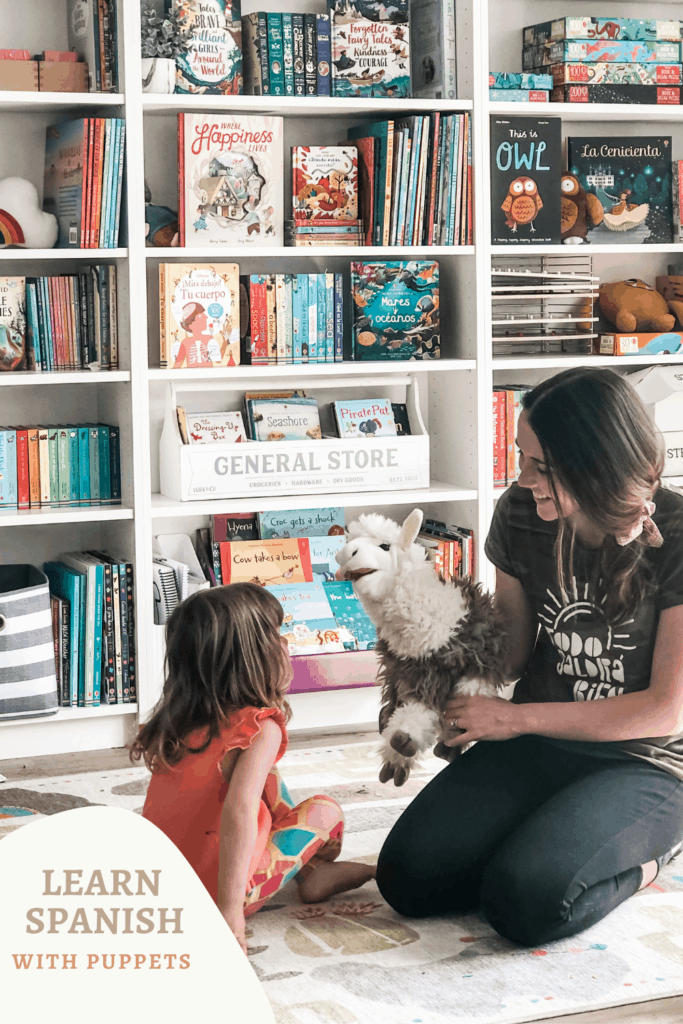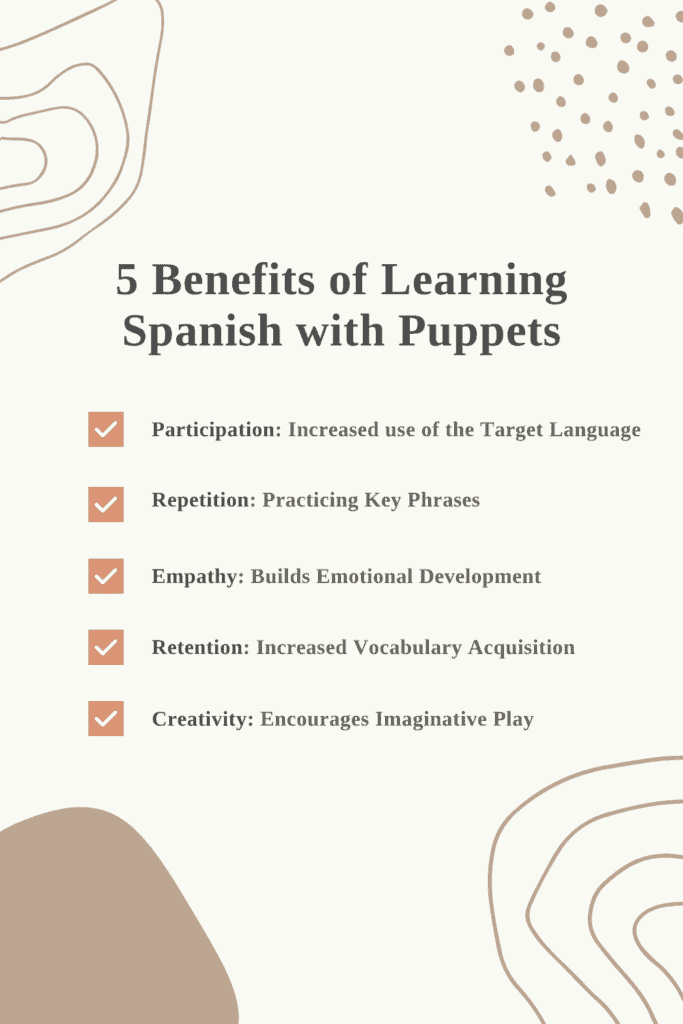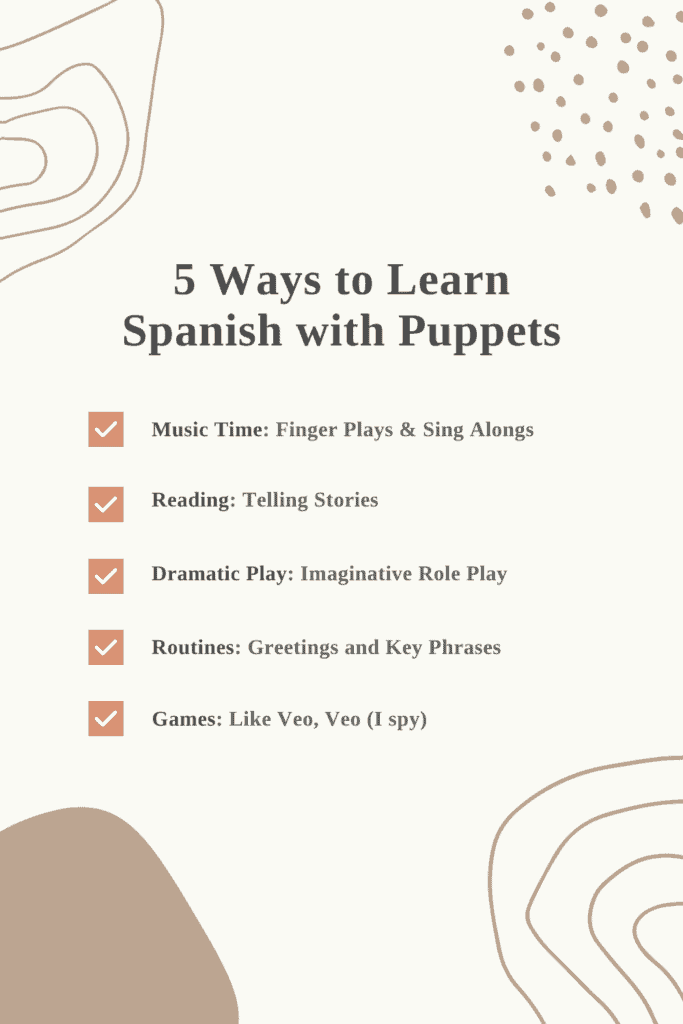In this post: FIVE benefits and ways you can use puppets as a language learning tool to get your kids engaged and excited about languages!
Ever notice how your kids suddenly spring to attention when they see a puppet?
There is something timeless and magical about puppets, and guess what? They can be amazing language learning tools!
When my children were younger, we often used our beautiful Folkmanis puppet, Lola the llama.

This post contains affiliate links. As an Amazon associate this site earns from qualifying purchases.
Here’s the key: the puppet you choose only speaks Spanish. That way your kids will love helping you communicate with it.
Lola llama has quite the sense of humor and has a tendency to get into mischief, much to my kids’ delight!
It’s the most simple but super effective tool- one of those start NOW tools. Like, seriously- after you read this post, go buy a puppet!
5 Benefits of using Puppets for Language Learning
Here’s how having a puppet can help your kids engage with learning Spanish:
1. Puppets develop communication
They understand that the mascot can only speak Spanish so they can’t get away with speaking English. This encourages them to try instead of reverting back to English.
2. Intentionality
When the mascot is out, it forces YOU to speak more Spanish, too! The mascot becomes a physical reminder to use the target language intentionally.
3. Repetition
With a mascot, you are able to practice vocabulary more naturally and repeat key phrases like ¿Cómo estás? (How are you?) ¿Te gusta? (Do you like it?) ¿Cuál es tu _____ favorito? (What’s your favorite….?) etc.
4. Role Play
Puppets are fantastic for role play and modeling language. Whether practicing correct sentence structure or new vocabulary, using puppets allows your kids to interact and engage more effectively.
5. Supports Emotional Development
Puppets often allow children to express thoughts and feelings. It’s almost like a safety net. Talking to a puppet allows them to use their imagination.

5 Ways to Use Puppets for Language Learning
1. Music Time: Check out this related post for Spanish Finger Play songs on YouTube. These are great for little finger puppets but can also be enjoyed with larger puppets!
2. Reading: Telling stories with puppets can be a more engaging way to bring the story to life. You can use silly voices and dramatic play during the story. Older readers can read to the puppet: This can be a less intimidating way to practicing reading aloud.
3. Dramatic Play: Puppets really help imaginations come to life! Allow your child the space to explore in dramatic play. This could be creating a puppet show, or simply conversing with the puppet.
4. Routines: Puppets are a handy tool for transitioning between activities and building routines. For example, by using the puppet for greeting songs, or practicing key phrases with the puppet each day.
5. Playing Games: Puppets often bring a sense of humor and fun. Playing games like ‘veo veo’ (I spy) is a fun way to practice a language.

Have I convinced you yet?
Your assignment today is to choose your very own Spanish mascot, or if you already have one (yay you!), why not learn one of those YouTube songs together?
Llamitas Spanish Curriculum
If you are looking for more fun ways to learn Spanish, be sure to visit our curriculum shop!

Our open-and-go curriculum is loved by thousands of families! Lessons include phonics, math, literacy, music, art and lots of fun!
Related Posts:
